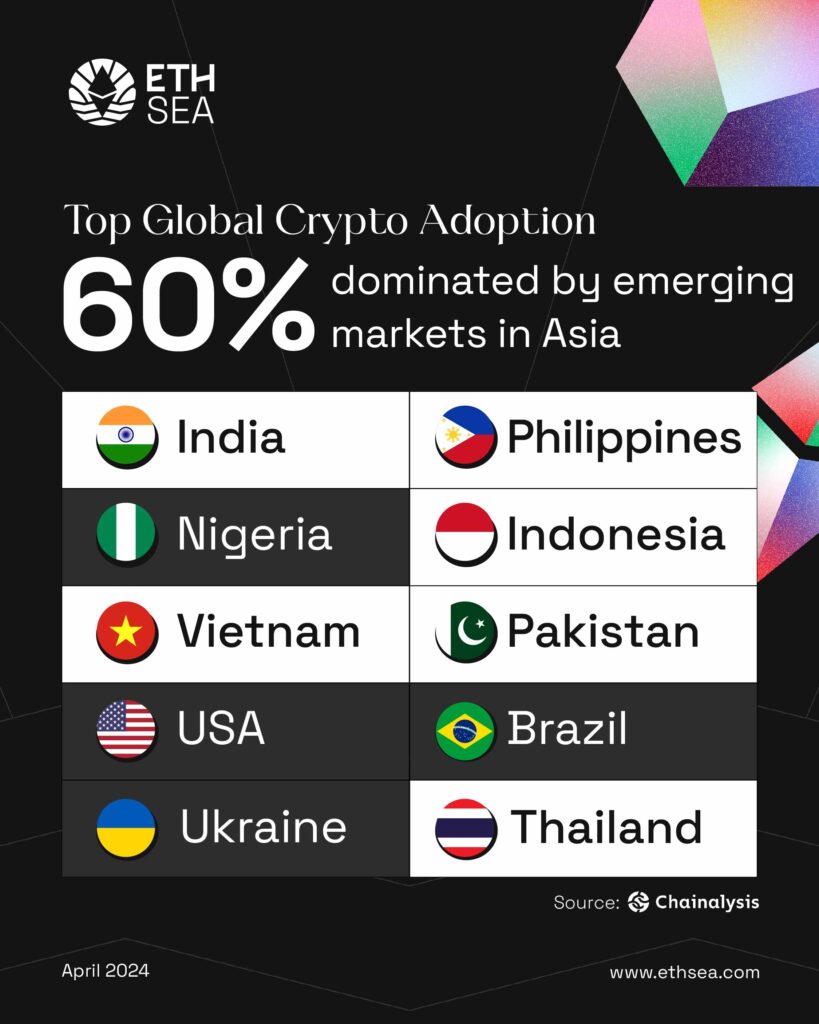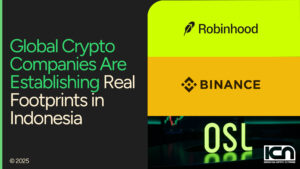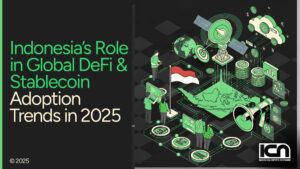The Web3 market is growing fast, expected to hit US$81.5 billion by 2030, with a strong 43.7% yearly growth. In the Asia-Pacific region, where sectors like banking and health are driving demand, this growth is even more rapid.
Zooming into Southeast Asia, the Web3 market is projected to be worth US$6.4 billion in 2030, growing at an impressive rate of 50.2%. This makes Southeast Asia a strong contender to become a global center for Web3.
But it’s not just about the big numbers. Southeast Asia has a bunch of reasons why it could be the go-to place for Web3. In simple terms, let’s explore five reasons why Southeast Asia might become the heart of Web3 development and talent.
Young and Tech-Savvy Population
Southeast Asia boasts a population exceeding 650 million, and the projected value of its internet economy is set to reach US$300 billion by 2025. With over 400 million internet users, more than 70% of whom are under 40, the region has a predominantly young and tech-savvy population. Trends in the technology sector, such as e-commerce, fintech, cloud computing, artificial intelligence, social media, and gaming, align well with the potential of Web3. These sectors can collaboratively harness Web3 talents to explore and contribute to the region’s Web3 growth.
Rise of Crypto Adoption
Vietnam, the Philippines, Indonesia, and Thailand rank among the top 15 countries in terms of crypto adoption, according to Chainalysis. Notably, the Philippines and Vietnam are experiencing increased crypto adoption, supported by play-to-earn games like Axie Infinity. Meanwhile, Indonesia’s crypto-friendly regulations are facilitating easier adoption, and in Thailand, 50% of crypto transactions are recorded in the DeFi sector, indicating strong retail demand for these services.

Regional and Global Collaboration
Southeast Asia’s geographical location facilitates seamless synchronization across different time zones, making regional and international collaboration more accessible. Companies based in Southeast Asia can communicate effectively with partners or clients in both Asian and Western countries within the same business day.
To support effective collaboration, initiatives come in various forms ranging from the growing community of Web3 builders and the many Web3 Hackathon events in the region. The newest is ETH SEA which will be held in April – May 2024.
ETH SEA is an online and offline hackathon event inspired by the Ethereum Foundation, with offline events in Jakarta, Bangkok, and Ho Chi Minh. This event provides partnership opportunities for projects on the Ethereum blockchain or companies seeking the best Web3 talent in Southeast Asia.
Government Embrace of Web3
Regulators in Southeast Asian countries, including Indonesia, Singapore, and Thailand, are demonstrating openness to blockchain and Web3 technology. Indonesia’s Ministry of Communication and Information (Kominfo) advocates for sandbox regulations in various technology-related sectors. Singapore, a growing hub for blockchain businesses, has announced a framework to regulate stablecoins. Thailand is taking steps to regulate the industry, introducing its cryptocurrency (Thai Baht Digital) and offering tax incentives for investment tokens.
The Emergence of Blockchain Companies in Southeast Asia
Southeast Asia is home to many blockchain companies, particularly in Singapore and Indonesia. Singapore hosts over 247 fintech companies, with a focus on blockchain technology. The Monetary Authority of Singapore (MAS) actively fosters a conducive environment for fintech and blockchain. The government has expressed interest in blockchain technology in Indonesia, with 1.629 registered companies or startups in the Online Single Submission (OSS) system under the category “Blockchain Technology Development Activities” as of September 2023.
Considering the substantial number of blockchain companies and their potential for continued growth in Southeast Asia, the region has the potential to become fertile ground for Web3 technology innovation and establish itself as a hub for global Web3 developers seeking new opportunities and challenges.
Conclusion
With the Web3 market projected to reach US$6.4 billion by 2030 and a CAGR growth of 50.2% in Southeast Asia, the region stands out as a potential hub for Web3 innovation. Backed by a young, tech-savvy population, high crypto adoption, efficient regional collaboration, and regulatory support, Southeast Asia offers a fertile environment for the development of Web3 technology. The presence of ETH SEA in April – May 2024 is expected to be a driving force to increase the development of Web3 technology in Southeast Asia.




